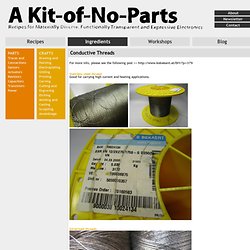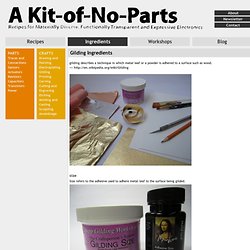

Silver Print. 007DOD. Metalon Inks. World-Class Conductive Inks at Accessible Pricing Metalon conductive inks capitalize on advanced materials and formulation to provide conductivity options for additive manufacturing of printed electronics like photovoltaic devices, RFID, smart cards/labels, displays, and advanced packaging.

Utilizing nanoparticles and flakes, Metalon inks are available in off-the-shelf formulations as well as custom formulations for specific applications and print methods. Variants already developed include silver inks suitable for application by inkjet, flexographic printing, and gravure. Copper-oxide reduction inks are also available for screen, flexographic, or gravure application. Metalon inks can be selected based on desired substrates, performance, and cost. Performance Sheet resistances as low as 4 milliohms per square and resistivities as low as 1.5x bulk have been attained with silver ink. Squeeze Bottles from Howard Electronics Low density squeeze bottles. How to Make Conductive Ink. DIY Conductive Paint for Cavity Shielding. I recently stumbled onto an “Instructable” on how to make conductive paint from easily obtainable supplies ( I used a variation of this technique to fabricate a stretchable strain gauge for a non-bass related project.

The results were promising, so I decided to try using a similar concoction for cavity shielding. While the electrical conductivity achieved using this method is not as high as foil tape it should provide respectable electromagnetic shielding. The basic idea is to create a paintable mixture containing graphite powder. Since graphite is highly conductive the surface painted with the graphite will have a low resistance once dry. The formula I used was one part 3M Scotchkote Liquid Tape, 1.5 parts graphite powder, and 1 part Acetone. The materials can be purchased locally at most hardware stores in small quantities. A showcase of Steven Mackaay’s stuff. Well, I was trying to solder some extra thick peizo material, having very little luck when I realized that this could be solved very easily with some sort of conductive adhesive.

So I set out to make some. I’m posting the steps for making a conductive adhesive for posterity and in case anyone needs to know. It’s not difficult though I have tried a few different methods and this one is the best. 1. Find your glue, preferably one that requires drying or curing, not anaerobic adhesives like Loctite (cyanoacrylate). In this case I used two-part epoxy. A small sample of the epoxy Nothing much to see there, since I wanted to use only a few drops of actual adhesive, I only mixed a gram or so of the stuff. 2. Anyways, if you don’t have any graphite on hand you can crush up some pencil leads in a crucible or on something that will allow you to make the graphite as fine as possible. Make Conductive Glue, Conductive Paint, and Conductive Ink.
To make your own conductive glue, you will be taking an insulator (Liquid Tape rubber or DAP Contact Cement) and turning it into an electrical conductor.

This is done by the addition of carbon graphite powder which is a conductor. As the binder (LT or DAP) sets up, the carbon crystal flakes stack on each other and intertwine to make the glue conductive. The result is a flexible conductive glue that will stick well to most things. The glass circuit doodle in pic3 below, is used to illustrate some of the ways the different glues can be used. Click on the comment squares for details. WB-101 Water Based Silver Conductive Ink. Conductive Paints and Pastes, Silver and Carbon - SPI Supplies. Silver Paint, 20% Silver, 30 gram brush-cap bottle. * Whole number only Detailed Description This conductive ink is designed for use on flexible or rigid substrates and is commonly used for electrical grounding.

Even the 20% formulation is listed at <0.4 Ohm/Sq; the other formulations are even MORE conductive! Our non-flammable, conductive, 20% silver paint doesn't dry out in the bottle easily. It contains highly conductive silver particles in an adhesive base used for mounting samples. This high quality silver paint is packaged in bottles containing 30 grams each and is competitively priced. For more information, please view the 20% Silver Paint Technical Data Sheet or the MSDS Sheet. Conductive fabrics. Conductive thread. For more info, please see the following post >> Stainless steel thread Good for carrying high current and heating applications.

Silverized threads Wire threads. MG Chemicals - 8331-14G - Chemicals - Epoxy Compounds. Chemtronics - CW7100 - Chemicals - Lubricants & Greases. Coductive tape. Conductive fabric Tape (silver) Conductive fabric is nice to work with, you can achieve curves and rounded shapes, simply by shaping the tape as you adhere it to your base material.

It is possible to solder to the fabric tape using flux, but it remains a delicate connection. Ni/Cu/Co FABRIC TAPE >> Gilding ingredients. Gilding describes a technique in which metal leaf or a powder is adhered to a surface such as wood.

>> size Size refers to the adhesive used to adhere metal leaf to the surface being gilded. Metal Leaf TCP Global sells ribbon leaf and simple leaf, both come with a wax backing that holds the leaf to the backing sheet and only applies it where there is adhesive. Simple leaf by Mona-Lisa comes with wax backing that makes application MUCH less messy. Conductive powders. About Newsletter Contact Recipes Ingredients Workshops Blog Traces and ConnectionsSensorsActuatorsResistorsCapacitorsTransistorsPower.

Conductive paints. There are a whole variety of conductive paints available, mostly over the internet.

Metallic markers and paints that you can get from craft stores are typically NOT conductive. Conductive paints are not cheap, but they are affordable and can be used in many of the processes described in the recipes on this website. Copper paint from LessMF: Electromagnetic Field Shielding Paints. YShield High Frequency Shielding Paint Easy to apply water-based paint for walls, ceilings, doors and other interior OR exterior surfaces. Very effective for blocking cell phone signals, CB, TV, AM, FM signals, radiofrequency radiation and microwaves. Tested highly effective up to 18 GHz! Based on a high quality pure acrylic binder, this shielding paint offers a perfect compromise of excellent attenuation, high water resistance and good ecology.